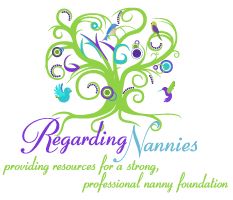Five Tools for Supporting a Child through Suspected Abuse
Myrna Alphonse MA, NCC
The health & safety of our charges is our main priority in any job we may take on. Nannies are experts often equipped with tricks of the trade to manage negative behaviors, nutritious meal meltdowns, and resistant sleepy kids. But is your bag prepared to deal with ANY emergency that comes your way?
We all know a nanny has direct access to a child in a one on one household setting. If, you are faced with dealing with a child that may have been abused there are ways to handle supporting this child that are more effective than other ways. The power of a positive adult can make a big difference in the outcomes of healing through this painful experience.
TOOL #1-Armor All
A nanny needs to have on a coat of armor to be strong for her charge when s(he) is unable. It will not be helpful if we freak out and lose our composure in front of them. A child will absorb the emotions reflected back to them and make decisions to share more or hold back their point of view depending on our response. It is important to exude calm empathy to normalize their feelings.
TOOL #2-Q-tips
A nanny needs open ears to LISTEN without judgment. There are many nonverbal cues to deepen the listening interaction so the child is encouraged to speak at their comfort level. A nanny can nod, bend down at the child’s eye level, and offer utterances that show undivided attention. If the source of fear exists in the home, find a private place that minimizes interruptions.
TOOL #3-Seltzer
There is magic when conversations happen between two people sharing a fizzy drink. A nanny can offer this special treat to talk things through when the subject surfaces. This is not the time to put on our detective caps and probe too far with “why”. It will be too abstract for their developmental ability to process. Instead, open-ended questions like, “Can you tell me what happened” allows the child to speak freely. Also, honest child appropriate dialogue to explain what you’ll do with the information shared. It will harm the relationship if nanny promises to keep secrets that will be shared with reliable outsiders. You may need to continuously reassure the child that it’s not their fault and that they are not in any trouble.
TOOL #4-Blanket
The insulation from harm makes a blanket the perfect tool. A nanny can offer a layer of protection for an insecure child. It is a reminder to ask permission before touching a child. They may be sensitive to physical or emotional pain from trusted adults. Do not force hugs or intimate gestures that may make them feel uncomfortable.
TOOL #5- Tweezers
A nanny can gently attempt to pry “self blame” out of a child. By validating their feelings, expressing sorrow for what happened to them, and emphasizing the injustice of the event, it can begin to separate them from the bad act. A child does not want to be singled out for negativity.
All 5 tools can begin to dismantle the stigma of living with abuse. Clearly, Nannies have tremendous influence to be change agents in this difficult position. The path of resiliency will be ignited for positive future potential.
In my next installment, seal your emergency kit with a helpful resource directory!
